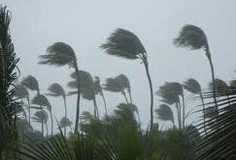
Many people dismiss the time honored-tradition of making personal resolutions this time of year. That tradition has gone along the wayside for most – the idea of adding pressure to our hectic lives seems daunting in this day and age. While I am not one to encourage people to make personal resolutions around New Years, I am one who likes to see people make practical changes to the way they act and live in order to improve safety and give a little peace of mind.
One of the easiest things families can commit to doing this year is to create an emergency kit for their home. Unforeseen disaster and complications can hit us at any time. Preparation for these things can increase safety and give you peace-of-mind.
What You Need to Know
I break emergency kits into two types: Home and Travel. A kit stored at home will usually contain more supplies because of the added room and the potential to be stuck in the home for long spans of time during a disaster. However, during many disasters, evacuation is necessary. In these cases an emergency kit that can be easily picked up and taken with you is needed, something like a large waterproof backpack or easy to carry duffel bag work well here.
Packing Your Emergency Kit
There are a lot of items that should be included in a good emergency kit. Below is the list of the most common items recommended for kit, categorized by essential, important, and nice-to-have. Each family will need to evaluate the list and put together the items they believe will be the most crucial for them in a time of crisis.
Essential Kit Items
o LED flashlight: These reliable torches are a must. The new technology is far superior to battery-draining incandescent bulbs and provides a brighter, more visible light than any other light source available. Remember to include two LED torches and extra batteries.
o First-Aid kit: Stock a complete kit with basic medical items like bandages, disinfectant, basic pharmaceuticals, etc. If your family members require daily medication, make sure to store extras in the kit as well.
o Multi-tool or pocketknife: A sturdy multi-tool provides you with basic tools in an easy to carry package. A good multi-tool will have screwdrivers and knife blades in various sizes for a number of different applications.
o Non-perishable food: Include food that doesn’t need to be cooked in your kit supplies. Pack enough for at least a 72-hour (3-day) period. Nuts, granola bars, dried foods, and peanut butter are all excellent choices. Canned food has a good shelf-life too. Just be sure to include a can opener (or make sure your multi-tool has one)!
o Bottled water: Pack one gallon of water per person per day. This not only serves as your drinking water (which your body desperately needs) but will provide enough to use for sanitation purposes.
o Warm blankets: For your home, any warm, dry blankets will suffice, preferably made of wool. Space blankets for your travel pack will conserve space and lighten the load.
o Waterproof matches/lighter: It is important to have fire-starting tools in the event that extra warmth is needed.
Important Kit Items
o AM/FM radio: Important information is often broadcast across radio waves in the event of an emergency. Keep extra batteries in your kit for the radio if you choose to include one in your kit.
o Extra clothing: If inclement weather is involved, the value of warm, dry clothes increases dramatically. Put extra clothes in a waterproof bag.
o Dust mask: Natural disasters can produce a big mess, stirring up dust and other harmful particles.
o Bleach: This common household cleaner serves a number of purposes, the most important being purifying drinking water. Sixteen drops per gallon will provide you safe, drinkable water.
o Cash (and change): ATMs and credit card machines don’t work when the power is out. Keep extra cash in a safe place within your kit in case you need to buy supplies during an emergency.
o Whistle: Often overlooked, do not underestimate the importance of a good whistle. These little wonders are simple to use, safe to carry, and easy for emergency personnel to hear.
Nice-To-Have Kit Items
o Moist Towelettes: For cleaning and sanitation
o Plastic garbage bags: For cleaning and sanitation
o Tarps / Plastic Sheeting: Window and Wall Repair
o Feminine Hygiene Products
o Baby Diapers / Formula
o Extra Glasses, contacts, etc.
o Duct Tape

Source by Ben Anton
 Vitamin Agent The Health & Naturalistic Source
Vitamin Agent The Health & Naturalistic Source





